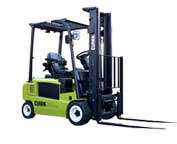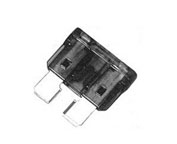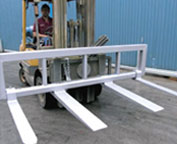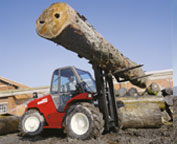
Mast Chains - Utilized in various applications, leaf chains are regulated by ANSI. They could be used for lift truck masts, as balancers between heads and counterweight in several machine tools, and for low-speed pulling and tension linkage. Leaf chains are occasionally likewise referred to as Balance Chains.
Features and Construction
Made of a simple pin construction and link plate, steel leaf chains is identified by a number which refers to the pitch and the lacing of the links. The chains have specific features like for example high tensile strength for every section area, which enables the design of smaller devices. There are A- and B- type chains in this series and both the AL6 and BL6 Series have the same pitch as RS60. Lastly, these chains cannot be driven with sprockets.
Handling and Selection
Comparably, in roller chains, all of the link plates have higher fatigue resistance due to the compressive stress of press fits, whereas in leaf chains, just two outer plates are press fit. The tensile strength of leaf chains is high and the utmost acceptable tension is low. When handling leaf chains it is vital to consult the manufacturer's instruction booklet to be able to ensure the safety factor is outlined and use safety measures at all times. It is a great idea to exercise utmost caution and use extra safety guards in applications where the consequences of chain failure are serious.
Higher tensile strength is a direct correlation to the utilization of more plates. Since the utilization of a lot more plates does not improve the maximum allowable tension directly, the number of plates can be limited. The chains require frequent lubrication since the pins link directly on the plates, producing an extremely high bearing pressure. Utilizing a SAE 30 or 40 machine oil is normally advised for most applications. If the chain is cycled over one thousand times on a daily basis or if the chain speed is more than 30m per minute, it would wear very rapidly, even with continual lubrication. Thus, in either of these situations using RS Roller Chains would be more suitable.
AL type chains are just to be utilized under certain conditions like for instance where there are no shock loads or when wear is not really a big problem. Make certain that the number of cycles does not exceed 100 daily. The BL-type will be better suited under various situations.
The stress load in parts will become higher if a chain using a lower safety factor is chosen. If the chain is even used among corrosive situations, it could easily fatigue and break very quick. Doing frequent maintenance is really essential when operating under these types of situations.
The outer link or inner link kind of end link on the chain would determine the shape of the clevis. Clevis connectors or Clevis pins are constructed by manufacturers, but the user typically provides the clevis. An improperly made clevis could reduce the working life of the chain. The strands should be finished to length by the producer. Refer to the ANSI standard or contact the producer.
![]() Click to Download the pdf
Click to Download the pdf
Forklift Parts







Lift Parts Express
TOLL FREE: 1-888-695-7994
Boise City, Idaho
forkliftpartsboisecity.com
Email Us
About Us



